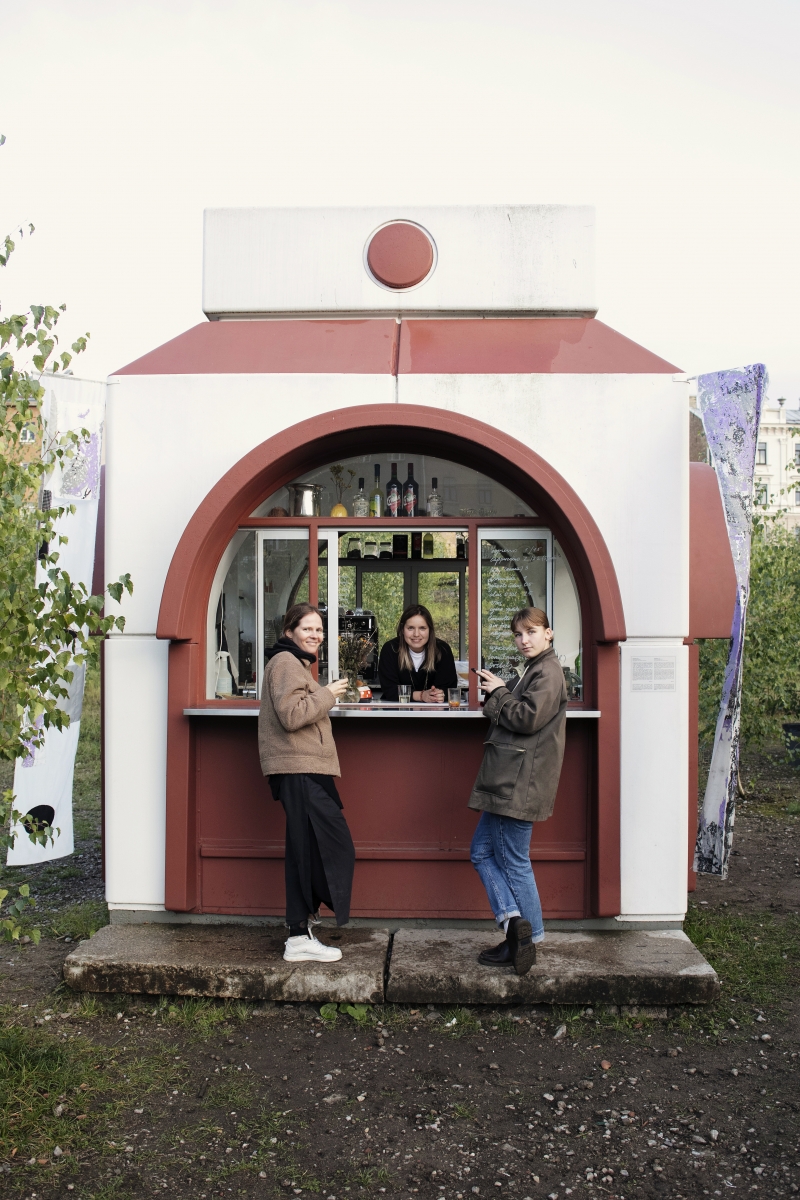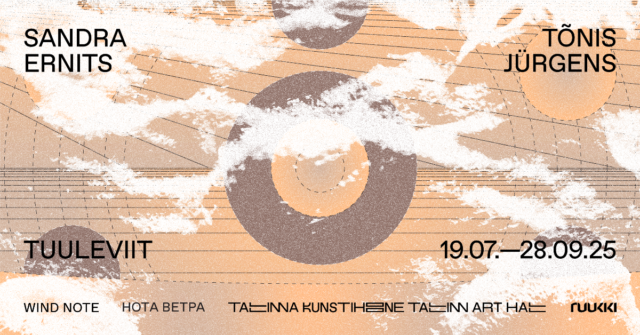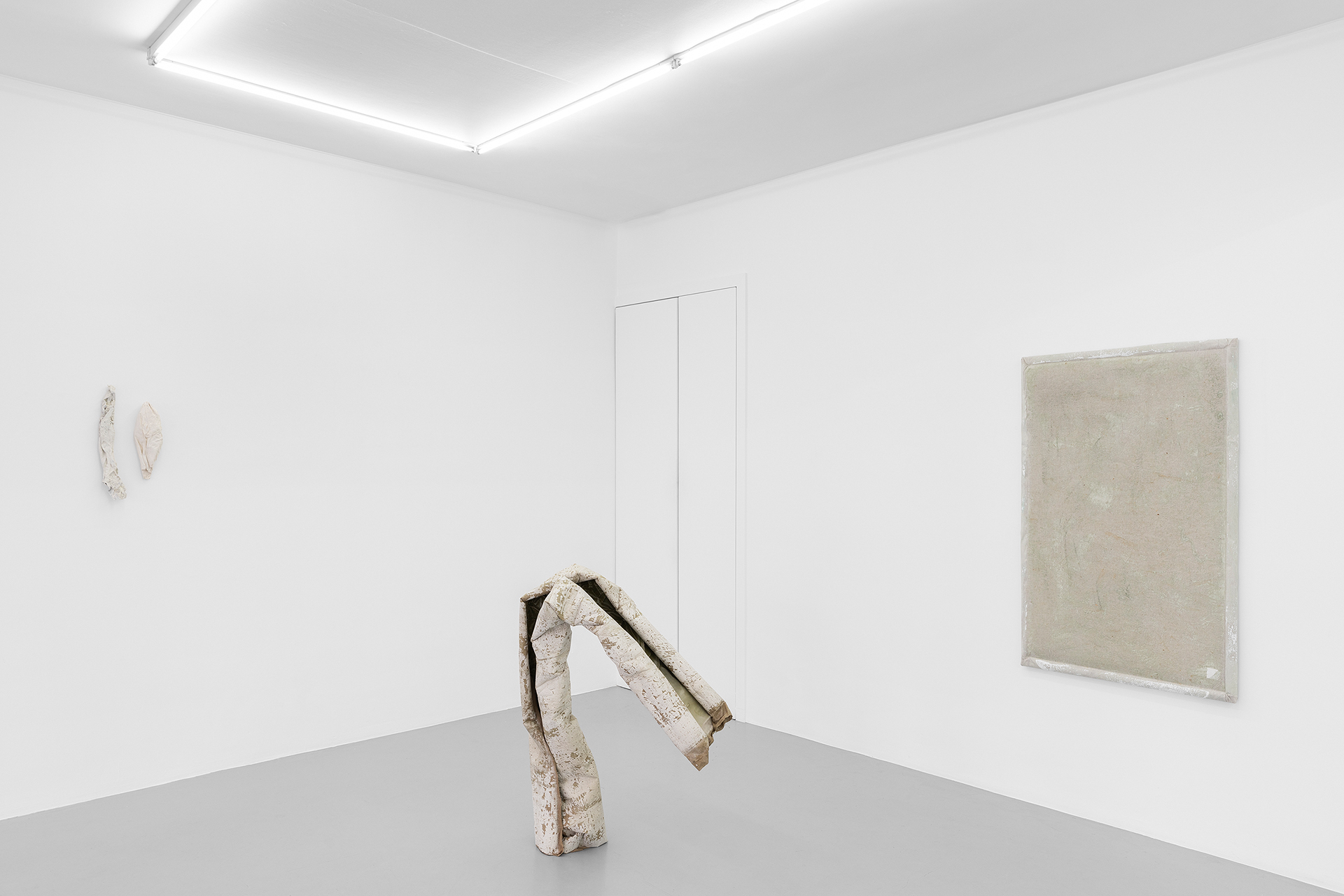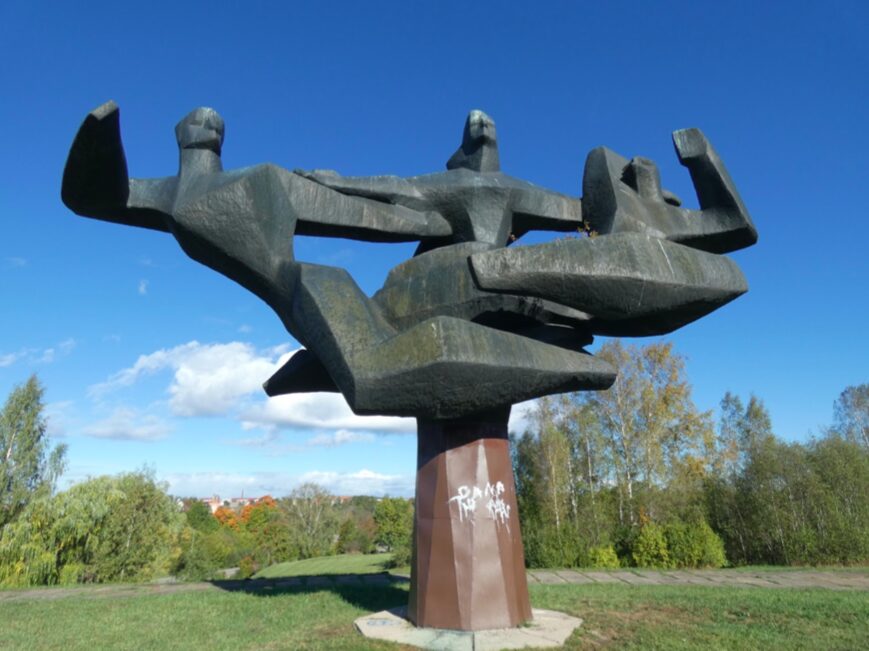Merilin Talumaa: The performative cooking The Treat by Monika Varšavskaja took place in September at Palette’s seasonal kiosk and in the surrounding communal Gardens of Sporta Pils in Riga. Daria, you were the host of this event, and you are the founder of Palette’s kiosk, which was inaugurated in the summer of 2022. Can you tell us a bit more about how the Palette project came to life, and what role it has amidst the communal gardens?
Daria Melnikova: I started the Palette project in 2019 as an ongoing cross-disciplinary, collaborative and journeying platform that focuses on the process, exchange of experiences and ideas. It poses a sequence of episodes before the viewer in different geographical locations, and is a mixture of works by invited artists and collaborations of various kinds in a conjured set-up, shaped from daily observations, historical references, personal inspiration and passion. Apart from its spine, a bar stand, Palette’s visual image and design differ for each episode, and depend on the actual topic and venue. My desire was to create a welcoming atmosphere that invites visitors not only to see the exhibited works, but also to hang out in this vicious ‘world’, spending time sharing specially created beverages and conversations.
So far, Palette has had two episodes outside Latvia: Introduction in the Karlin Studios in Prague (2019), and Three-Legged Evidence at the Salon du Salon in Marseille (2020). Since the summer of 2022 it has had a seasonal venue, a kiosk as a part of the urban environment, an intervention in the Gardens of Sporta Pils, where the third episode Lazy Afternoon (consisting of the exhibition Summering by the French artist Kamil Bouzoubaa-Grivel, and the gastronomic intervention The Treat by the Estonian chef Monika Varšavskaja) happened. The Palette kiosk project activates a work of art as a meeting point, where artist meets artist, and the artist meets the visitor in non-institutional and informal settings. It highlights the role of art as an everyday need, and sheds a light on what art can mean and give to the viewer, who can become part of its development from its usual passive consumer role. It became a spot in the city centre where you can escape from urban tension in surroundings of both wild nature and carefully grown tomatoes. I’m glad to say that the Palette kiosk is loved by gardeners and passers-by.

Palette by Daria Melnikova at the Karlin Studios, Prague, 2019. Photos: Tomáš Souček, Aleksandra Vajd.

Palette by Daria Melnikova at the Karlin Studios, Prague, 2019. Photos: Tomáš Souček, Aleksandra Vajd.
MT: In recent years, during the corona pandemic, people suddenly had more time and were spending their days at home cooking and experimenting with food. Monika, you started an Instagram account @cuhnja during the pandemic, and it quickly grew into an admired and much-loved blog with thousands of followers. Can you please tell us a bit more about how this journey started for you, and what it has brought to your life?
Monika Varšavskaja: During the first lockdown, my boyfriend and I stayed in the countryside in Normandy in France. Almost my whole life was on hold, so I spent my days in the kitchen prepping for a week or cooking the usual breakfast, lunch and dinner. People would share ideas and recipes a lot during that time, and I liked capturing my meals and processes. I didn’t want to harass my Instagram followers with food content, so I spontaneously created @cuhnja.
MT: Monika, you have been active on the French artistic and food scene for a couple of years now. The Treat was the first performative cooking session you did in Riga. What features can you draw from this new context that you have just experienced? Are there any noticeable differences between the French and Latvian food cultures?
MV: I think people crave a simple and fun approach to food, something they can be playful with and which isn’t too serious. French and Latvian food cultures are extremely different, in that Latvian food, as well as that of other Baltic countries, is strongly influenced by Soviet times and its way of eating. It still persists in many countries that were part of the Soviet bloc.
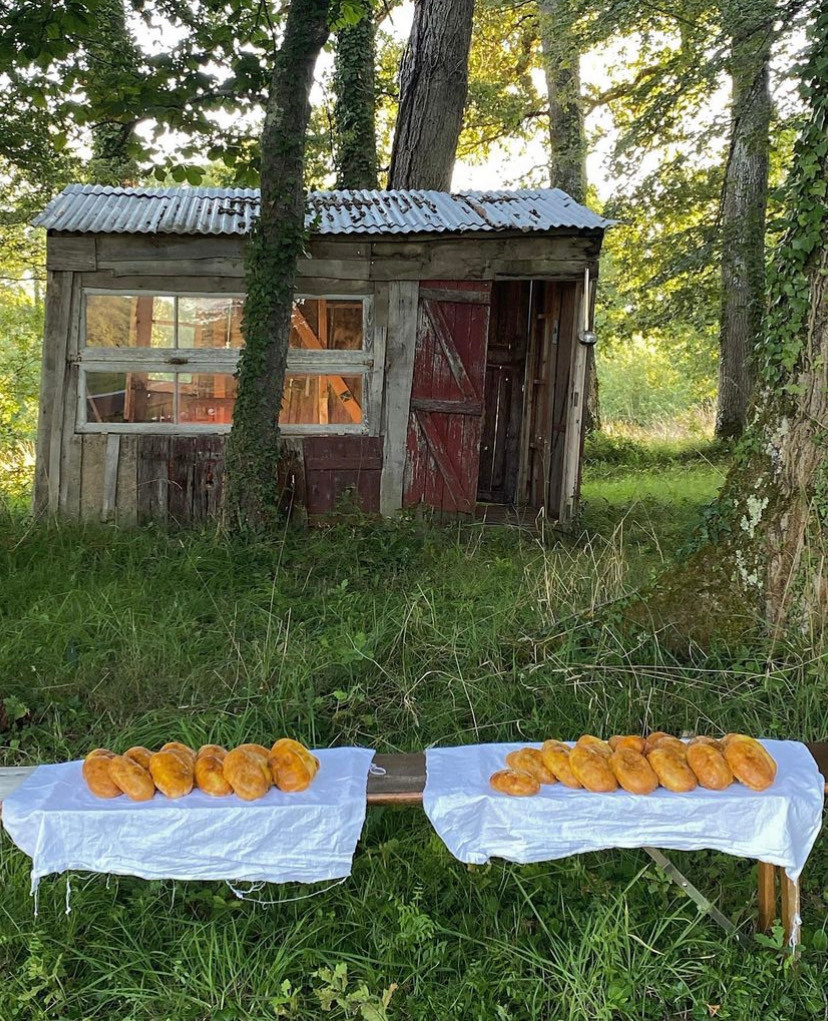
Cooking session by Monika Varšavaskaja. Photo from personal archive.
MT: The performative cooking session took place in Riga city’s communal garden, which is a unique place to experiment with the idea of growing seasonal products in an urban environment. How has this garden project been perceived by the local community? Also, what was the audience’s feedback during the performative cooking event in the garden?
DM: I should admit that before the event happened people were a bit cautious, asking a lot of ‘why?’ questions, mostly because of the ‘admission free’ aspect. ‘Why invite a chef to prepare food and serve it for free?’ Well, I see Monika’s gastronomic intervention as equal to any other art event held within the framework of the Palette project, where people are brought together, without charging them, to feel welcome and good, and that brings us back to Palette’s main goals, to focus on the process, the exchange of experience and ideas, communication and collaboration.
In the end, everybody who came was happy and grateful, and expressed their appreciation for the opportunity to have the experience. Some people said they had meaningful conversations in unexpected situations, while eating fire-baked potatoes, which, by the way, were last done ages ago.
MT: You both come from the Baltic States, where picking berries and mushrooms in the forest, and growing one’s own herbs, vegetables, apples and plums at a house in the country, is a natural part of the cultural heritage, and something that people also do a lot today. How has this influenced both your practices?
MV: I think, in terms of products, it made me not go searching too far, but to find ways to work with what was available. Most of my grandparents’ cooking, for example, is based on turning simple ingredients into something delicious. They needed the skill to find pleasure and comfort in simple ingredients.
DM: I grew up with grannies supplying us with vegetables, fruit and berries from the country, which my mother served fresh or preserved for the winter. We were also constantly going to the forest for mushrooms with my parents, and they still do it. Oh, this mushroom picking thing is viral in Latvia; when the season starts people go crazy. You cannot escape mushrooms wherever you are: Instagram feed (mostly mushrooms, my mother calls it); talking about mushrooms; you go to a restaurant … the mushroom menu.
In the kiosk I offer visitors a seasonal mix of Mediterranean dishes and ‘summer house’ (à la dacha) flavours, spiced with herbs from surrounding gardens. The menu changes from time to time, and depends mostly on my mood, the weather, and what I can get from local markets.
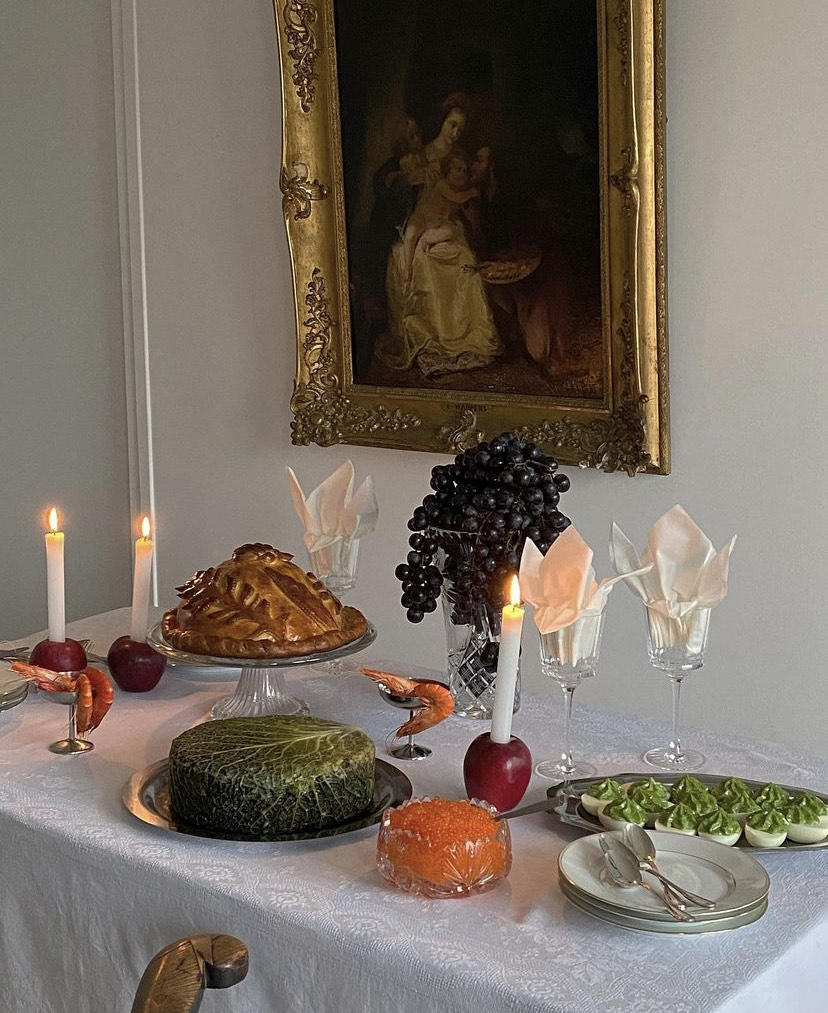
Cooking session by Monika Varšavaskaja. Photo from personal archive.
MT: Do you think that, at a time when we are facing an ecological and economic crisis, people are more eager to make changes in their cooking and eating habits? What, if any, improvements would you like to see in the food culture in general?
MV: It is not news that if we want to eat well and responsibly, we should eat as local and seasonal as possible. I would be delighted to see more people growing and picking their own food, because it is a hard job, but so gratifying. And also preparing a good base in the kitchen, good stock, seasonings, jams, etc.
DM: Whether there is an economic or some other crisis or not, we can’t forget that health and well-being are priceless priorities, so there shouldn’t be a special reason for taking care of yourself. The better you treat yourself, the better you feel, and the easier you overcome any difficulty. I’m not talking about taking yourself to fancy restaurants every day. Also, not everybody can afford products from the bio-sections in shops. So just go for healthier alternatives in your affordable price range, as most products have one, and not necessarily the more expensive one. Read labels for ingredients, and treat products with respect while cooking, not killing them with oil, sugar or salt. I think these few steps lead to subconscious satisfaction. As for improvements, I think that, regardless of the cost, overall food producers should be more responsible by offering better-quality products and cutting out chemical additives.
DM: Have you personally made any changes to your daily cooking and eating habits recently? Do you have any tips or recommendations to share with the reader?
MV: I rarely buy meat, and I always try to buy seasonal products. I like the idea of getting everything possible out of a certain vegetable, and then welcoming another season with new goodies. It obliges us to be more creative with food and to find different ways of cooking our products.
DM: Due to circumstances, I had to make changes eight years ago, like no added sugars and less fried food, and more vegetables, fibre and low-carb products. I pretty much stick to that while cooking, emphasising seasonal products. I think that as long as you have a healthy daily meal plan and some cheat meals occasionally, everything should be fine. Of course, you will always find an example of somebody who all their life eats French fries with a mountain of mayonnaise, finishes it with soda and a cigarette, and lives happily to the age of ninety-five. Well … you have the option to try and see if you are one of the lucky ones.
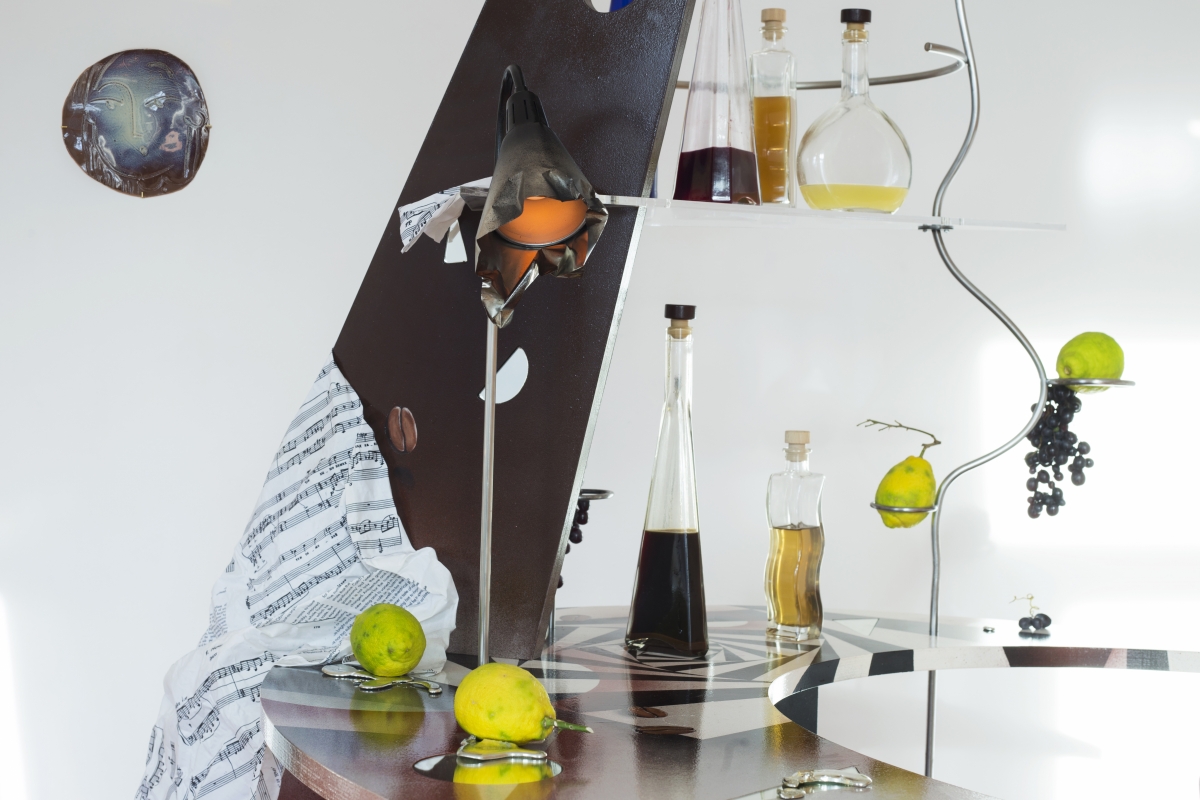
Daria Melnikova. Palette, 2019–2020. Wooden construction, various materials. Ieva Kraule-Kūna. Untitled, ceramics, 23x23x1 cm, 2015. Marseille, 2020, photo by Philippe Munda.
MT: Would you like to share one of your favourite autumn dishes, something that is simple and easy to cook?
DM: For me, it is oven-roasted cauliflower miso pureed soup: 1) in a bit of olive oil, roast cauliflower florets with garlic cloves and quartered onions until they are golden-brown (other vegetables like button mushrooms, leeks or courgette can be added); 2) at the same time, mix miso paste with water and boil in a pot; 3) add the roasted vegetables to the miso bouillon and cook for some time, about fifteen to twenty minutes; 4) use a hand mixer to blend it until it is a velvety texture, and season to taste (I usually add salt, pepper, a bit of cardamom, coriander and lemon juice; and 5) by the way, you can definitely use toppings: there’s room for imagination.
Please find information and a photo gallery of Monika Varšavskaja’s gastronomic performance ‘The Treat’ on Echo Gone Wrong here.
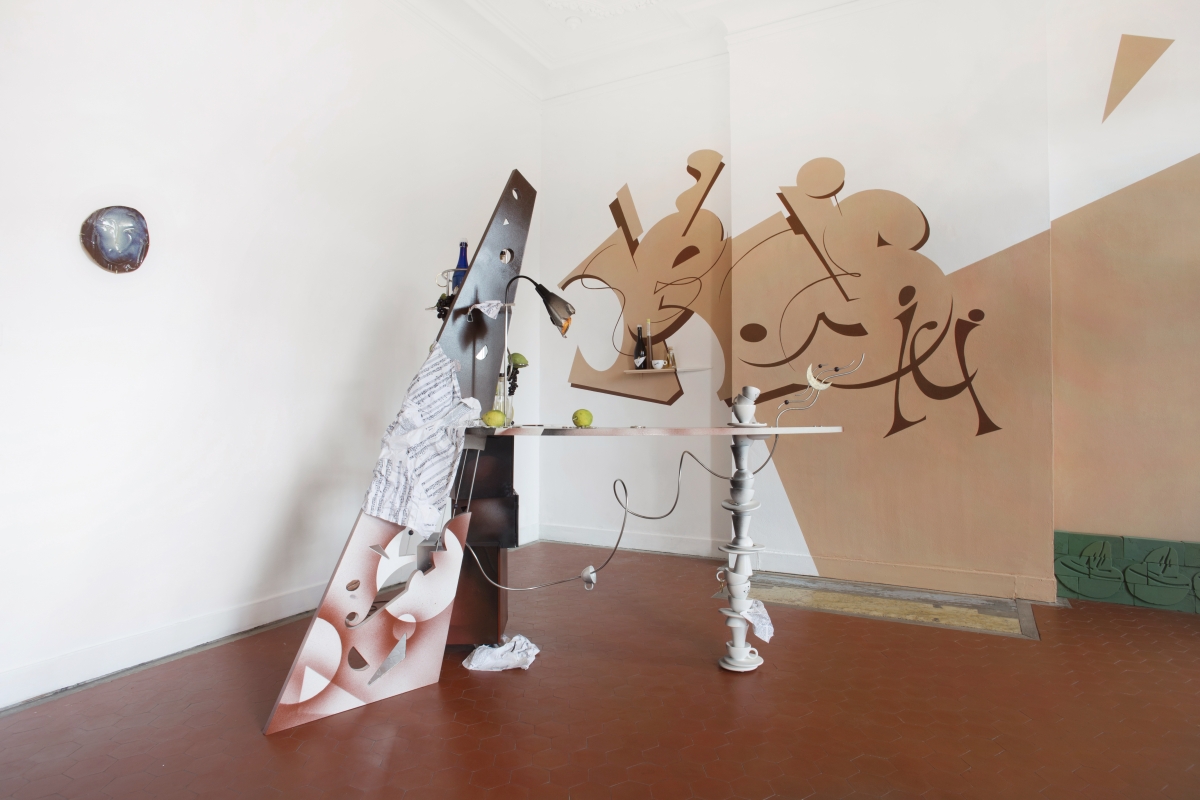
Palette Three-legged Evidence. View on the exhibition, Marseille, 2020. Photo by Philippe Munda.
